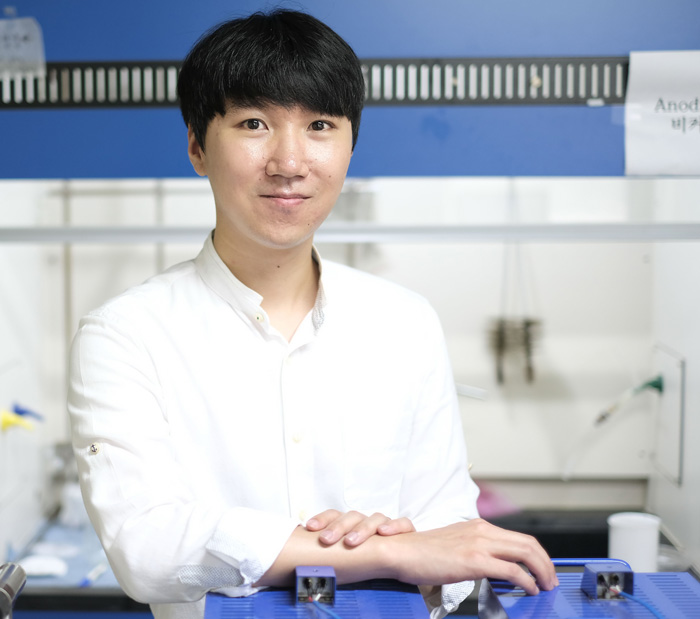Research Stories
Development of semiconductor photoanode material for hydrogen gas production
This study proposed a new concept of strong inversion of the surface charge that are water spilitting cells
Advanced Materials Science and Engineering
Prof.
CHO, HYUNGKOUN
Youngbeen Kim
The article entitled “Electrochemical surface charge-inversion from semi-insulating Sb2Se3 photoanodes and abrupt photocurrent generation for water splitting” was published by Prof. Hyung Koun CHO and Youngbeen KIM (Integrated Ph. D program) at the Dept. of Energy & Environmental Science.
Sb2Se3 with the 1.3 eV band-gap and native p-type characteristic is considered for the light harvester and absorption layer of the photovoltaic devices. However, the previous studies for PEC water splitting using pristine p-type Sb2Se3 have shown poor photocurrent and stability performances.
Here, they found that the low PEC performance of the pristine Sb2Se3 is due to the energy band structure as a photocathode, so they designed new synthesis method to prepare n-type Sb2Se3 via controlling the origin of electrical conductivity.
In this article, the study proposed the fabrication design of n-type Sb2Se3 photoanode with high photocurrent performance for photoelectrochemical water splitting cells at the first time based on the formation energy of the point defects determining the electrical conductivity.
In particular, they electrochemically analyzed the origin of this explosive photocurrent generation and proposed the novel mechanisms using the typical capacitance concepts based on electrochemical analyses. As a result, the synthesized n-type Sb2Se3 exhibited the remarkable photocurrent density of 5 mA/cm2 from the photoanode for the first time.

